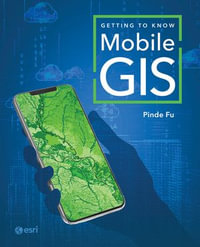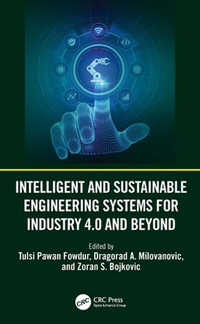Foreword by Stephen Hayes.Foreword by Allison Mankin and Jon Peterson.
About the Authors.
Preface to the Second Edition.
Preface to the First Edition.
Acknowledgements.
Part I: Introduction to the IMS.
1 IMS Vision: Where Do We Want to Go?.
1.1 The Internet.
1.2 The Cellular World.
1.3 Why do we need the IMS?
1.4 Relation between IMS and non-IMS Services.
2 The History of the IMS Standardization.
2.1 Relations between IMS-related Standardization Bodies.
2.2 Internet Engineering Task Force.
2.3 Third Generation Partnership Project.
2.4 Third Generation Partnership Project 2.
2.5 IETF-3GPP/3GPP2Collaboration.
2.6 Open Mobile Alliance.
3 General Principles of the IMS Architecture.
3.1 From Circuit-switched to Packet-switched.
3.2 IMS Requirements.
3.3 Overview of Protocols used in the IMS.
3.4 Overview of IMS Architecture.
3.5 Identification in the IMS.
3.6 SIM,USIM, and ISIM in 3GPP.
Part II: The Signaling Plane in the IMS.
4 Session Control on the Internet.
4.1 SIP Functionality.
4.2 SIP Entities.
4.3 Message Format.
4.4 The Start Line in SIP Responses: the Status Line.
4.5 The Start Line in SIP Requests: the Request Line.
4.6 Header Fields.
4.7 Message Body.
4.8 SIP Transactions.
4.9 Message Flow for Session Establishment.
4.10 SIP Dialogs.
4.11 Extending SIP.
4.12 Caller Preferences and User Agent Capabilities.
4.13 Reliability of Provisional Responses.
4.14 Preconditions.
4.15 Event Notification.
4.16 Signaling Compression.
4.17 Content Indirection.
4.18 The REFER Method.
5 Session Control in the IMS.
5.1 Prerequisites for Operation in the IMS.
5.2 IPv4andIPv6inthe IMS.
5.3 IP Connectivity Access Network.
5.4 P-CSCF Discovery.
5.5 IMS-level Registration.
5.6 Subscription to the reg Event State.
5.7 Basic Session Setup.
5.8 Application Servers: Providing Services to Users.
5.9 Interworking.
5.10 Emergency Sessions.
6 AAA on the Internet.
6.1 Authentication, Authorization, and Accounting.
6.2 AAA Framework on the Internet.
6.3 The Diameter Protocol.
7 AAA in the IMS.
7.1 Authentication and Authorization in the IMS.
7.2 The Cx and Dx Interfaces.
7.3 The Sh Interface.
7.4 Accounting.
7.5 Charging Architecture.
7.6 Offline Charging.
7.7 Online Charging.
8 Security on the Internet.
8.1 HTTP Digest.
8.2 Certificates.
8.3 TLS.
8.4 S/MIME.
8.5 Authenticated Identity Body.
8.6 IPsec.
8.7 Privacy.
8.8 Encrypting Media Streams.
9 Security in the IMS.
9.1 Access Security.
9.2 Network Security.
10 Policy on the Internet.
10.1 The COPS Protocol.
10.2 The Outsourcing Model.
10.3 The Configuration Model.
11 Policy in the IMS.
11.1 SIP Procedures.
11.2 Media Authorization.
11.3 Proxy Access to SDP Bodies.
11.4 Initialization Procedure.
12 Quality of Service on the Internet.
12.1 Integrated Services.
12.2 Differentiated Services.
13 Quality of Service in the IMS.
13.1 Instructions to Perform Resource Reservations.
13.2 Reservations by the Terminals.
13.3 Network Authorization.
13.4 QoS in the Network.
Part III: The Media Plane in the IMS.
14 Media Encoding.
14.1 Speech Encoding.
14.2 Video Encoding.
14.3 Text Encoding.
14.4 Mandatory Codecs in the IMS.
15 Media Transport.
15.1 Reliable Media Transport.
15.2 Unreliable Media Transport.
15.3 Media Transport in the IMS.
Part IV: Building Services with the IMS.
16 The Presence Service on the Internet.
16.1 Overview of the Presence Service.
16.2 The Presence Life Cycle.
16.3 Presence Information Data Format.
16.4 The Presence Data Model for SIP.
16.5 Mapping the SIP Presence Data Model to the PIDF.
16.6 Rich Presence Information Data Format.
16.7 CIPID.
16.8 Timed Presence Extension to the PIDF.
16.9 Presence Capabilities.
16.10 Presence Publication.
16.11 Presence Subscription and Notification.
16.12Watcher Information.
16.13 URI-list Services and Resource Lists.
16.14 XML Configuration Access Protocol.
16.15 Presence Optimizations.
17 The Presence Service in the IMS.
17.1 The Foundation of Services.
17.2 Presence Architecture in the IMS.
17.3 Watcher Subscription.
17.4 Subscription to Watcher Information.
17.5 Presence Publication.
17.6 Presence Optimizations.
17.7 The Ut Interface.
18 Instant Messaging on the Internet.
18.1 The im URI.
18.2 Modes of Instant Messages.
18.3 Pager-mode Instant Messaging.
18.4 Session-based Instant Messaging.
19 The Instant Messaging Service in the IMS.
19.1 Pager-mode Instant Messaging in the IMS.
19.2 Session-based Instant Messaging in the IMS.
20 Push-to-Talk over Cellular.
20.1 PoC Standardization.
20.2 IETF Work Relevant to PoC.
20.3 Architecture.
20.4 Registration.
20.5 PoC Server Roles.
20.6 PoC Session Types.
20.7 Adding Users to a PoC Session.
20.8 Group Advertisements.
20.9 Session Establishment Types.
20.10 Answer Modes.
20.11 Right-to-speak Indication Types.
20.12 Participant Information.
20.13 Barring and Instant Personal Alerts.
20.14 The User Plane.
20.15 Simultaneous PoC Sessions.
21 Next Generation Networks.
21.1 NGN Overview.
21.2 The Core IMS in NGN.
21.3 PSTN/ISDN Simulation Services.
Appendix A: The 3GPP2 IMS.
A.1 An Introduction to 3GPP2.
A.2 The Multimedia Domain (MMD).
A.3 Architecture of the 3GPP2IMS.
Appendix B: List of IMS-related Specifications.
B.1 Introduction.
B.2 3GPPSpecifications.
B.3 3GPP2Specifications.
B.4 ETSINGN Specifications.
References.
Index.
























